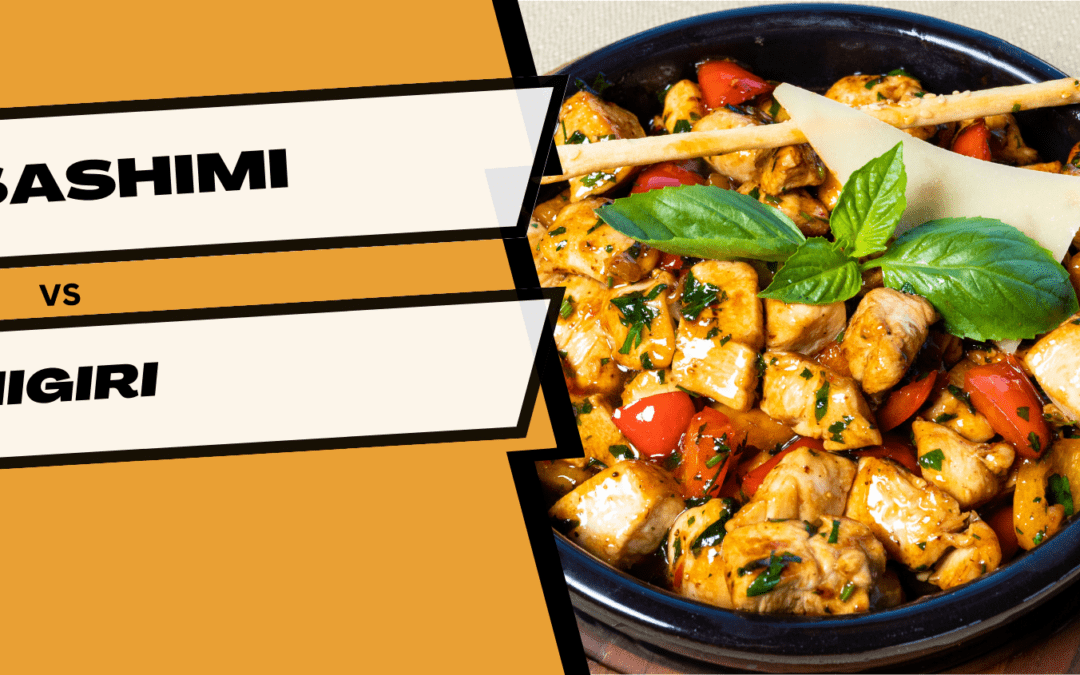When it comes to sushi, there are two popular types that stand out: Sashimi vs Nigiri. While they may look similar, there are distinct differences between the two. In this article, we will explore the differences between sashimi and nigiri, their respective origins, and some key factors to consider when choosing between them.
Origins of Sashimi and Nigiri
Before we dive into the differences between the two, it’s essential to understand their origins. Sashimi vs Nigiri originated in Japan during the Muromachi period (1336–1573), where it was initially served as a delicacy to the aristocracy. It’s a dish consisting of thinly sliced raw fish, served with soy sauce and wasabi.
Nigiri, on the other hand, was created in the 19th century by Hanaya Yohei, a sushi chef in Tokyo. He wanted to create a dish that was easier to eat and could be enjoyed by the masses. Nigiri consists of a small ball of sushi rice topped with a slice of raw fish or other seafood, held together by a thin strip of seaweed.
Differences between Sashimi and Nigiri
While both sashimi and nigiri are made with raw fish, there are significant differences between the two.
Preparation
Sashimi is sliced thinly, with the skin and bones removed, and served raw. Nigiri, on the other hand, consists of a small ball of sushi rice that is topped with a slice of raw fish or other seafood. The rice is seasoned with vinegar, sugar, and salt, and the fish is often brushed with soy sauce.
Presentation
Sashimi is typically presented on a bed of shredded daikon, which is a type of Japanese radish. It’s also served with a garnish of shiso, which is a Japanese herb. Sashimi vs Nigiri is served as a small ball of sushi rice, topped with a slice of raw fish or other seafood. It’s often presented on a wooden board or a plate.
Texture
Sashimi has a delicate, melt-in-your-mouth texture, whereas nigiri has a more substantial and chewy texture due to the addition of the rice.
Taste
Sashimi has a fresh, clean taste that highlights the flavor of the fish. Nigiri has a slightly sweet, vinegary taste due to the seasoning of the rice.
Choosing between Sashimi and Nigiri
When it comes to choosing between sashimi and nigiri, there are a few key factors to consider.
Personal Preference
The most crucial factor in deciding between Sashimi vs Nigiri is personal preference. If you prefer a more delicate texture and flavor, sashimi may be the way to go. If you like a more substantial, chewy texture with a slightly sweet flavor, then nigiri may be the better option.
Price
Sashimi not confined only fish is typically more expensive than nigiri, as it requires higher quality fish and more labor-intensive preparation.
Occasion
Sashimi is often served as a starter or appetizer at a Japanese restaurant, while nigiri can be enjoyed as a main dish or part of a sushi platter.

FAQs
- Is it safe to eat raw fish in sashimi and nigiri dishes?
Sashimi and nigiri are made with raw fish, which may carry bacteria or parasites. However, reputable sushi restaurants use high-quality fish that has been properly handled and stored to minimize the risk of foodborne illness. It’s always essential to choose a reputable restaurant and ask about the freshness of the fish.
- Can Sashimi vs Nigiri be made with cooked fish?
While sashimi and nigiri are traditionally made with raw fish, some sushi restaurants offer options with cooked fish or seafood. These dishes may not have the same delicate texture or fresh flavor as raw sashimi or nigiri, but they can be a good option for those who are wary of eating raw fish.
- What is the best way to eat Sashimi vs Nigiri?
Sashimi and nigiri are typically served with soy sauce and wasabi. To enjoy the full flavor of the fish, it’s recommended to dip a small amount of fish into the soy sauce and eat it in one bite. The wasabi can be mixed with the soy sauce or added directly to the fish for an extra kick of flavor.
- Can sashimi or nigiri be made with non-fish seafood?
While sashimi and nigiri are traditionally made with fish, they can also be made with other types of seafood, such as squid, octopus, or shrimp. These dishes may have a different texture or flavor than fish sashimi or nigiri, but they can be a good option for those who prefer other types of seafood.
- Is sushi rice the same as regular rice?
Sushi rice is a specific type of rice that is short-grained and sticky when cooked. It’s often seasoned with vinegar, sugar, and salt to give it a slightly sweet and tangy flavor. Regular rice, such as long-grain rice or basmati rice, does not have the same texture or flavor and is not typically used in sushi.
Conclusion
In conclusion, while Sashimi vs Nigiri may look similar, they are two distinct dishes with their own unique preparation, presentation, texture, and taste. When choosing between the two, personal preference, occasion, and price are all essential factors to consider. Whether you prefer the delicate taste and texture of sashimi or the more substantial texture and flavor of nigiri, both dishes are sure to delight sushi lovers.

